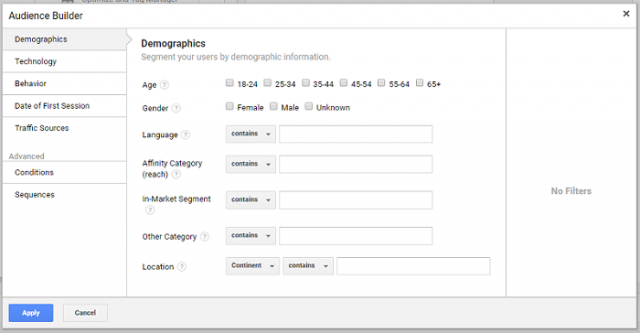“I’m always aware of who my core audiences are and I serve that niche.” Edward Burns, actor
The way we speak of our websites makes it easy to objectify them – “Our website had 83,657 pageviews yesterday from 18,235 sessions. The site also had a 16.4 percent bounce rate.” Working from this point of view, it’s not uncommon to see action items such as “increase pageviews” or “decrease the bounce rate.”
Sometimes it’s almost as though we are trying to diagnose some sort of digital illness from a set of symptoms. But what if we reframe how we think about our websites? “Yesterday, 15,055 people came to our website 18,235 times (1.25 visits per person). Along the way, they viewed 83,657 pages of content. For good or ill, 16.4 percent of the people who visited did nothing more than open a single page and then leave the site. That’s 2,469 people who either got what they wanted from a single page (good, efficient content) or arrived and found nothing worthwhile (poor, inefficient content).”
This really isn’t about wordplay; it’s about mindset. If we continue down the path of thinking that our websites are things to be diagnosed and mended in order to achieve higher pageviews, session counts, or some other metric, we risk ignoring the people whose attention (and actions) we are trying to reach and influence.
Ready to learn more? Connect with our Digital Strategy team.
Make the most of your reach
There are a finite number of people in your geographic market, and an even smaller number of those people need healthcare today. Your website doesn’t have an inexhaustible supply of people who have a healthcare need and are willing to visit your site.
Each hospital website caters to a limited audience that is theirs to serve or lose. By shifting our paradigm from “Analytics reports on our website” to “Analytics reports on the behaviors of people using the website” we gain a slightly different perspective.
How to put people back into your website metrics
Most of the tools we use to measure performance are geared toward pageviews, hits, and sessions. This can make it difficult to find the people inside the numbers. However, over the last year or two, some progress has been made.
Google Analytics has been enhanced with a few new capabilities that can help us reconnect website activity with the people who visit our websites. In our opinion, the first tool to start with is Audiences.
You’ve probably worked with personas while building your website or perhaps in describing a target market for advertising. Personas are based on the idea that people with similar interests or needs tend to have several similar characteristics, and they help us create focused web content or accurately target ads. But did you know that it is possible to recreate those personas as a reportable Audience in Analytics?
By defining and then applying an Audience as a filter to any Analytics report, we are immediately seeing the people inside the numbers. We can go beyond “Today, the website did this,” and arrive nearer to “Today, our Primary Care Audience did this on our website.”
The right balance for your Audiences
An Audience can be built from only a few pieces of information (Male, 45-54) or from complex data that combine a dozen or more characteristics. But we must be conscious of the extremes. Finding balance between an Audience definition that is too general and one that is too specific is crucial. Recall the earlier comment about how your available niche audience is already small compared to the area’s total population. If an Analytics Audience is created with too many characteristics, we stop learning about similar people with shared attributes and start hunting for unicorns.
Building and maintaining Analytics Audiences can have reach beyond reporting behavior on the website, including:
- Audiences can be imported into AdWords and used to optimize keyword targets and bids for better performance
- As Audiences are refined over time, they can help refresh the personas used to create page content and inform marketing strategy
- Google Optimize can use Audiences to manage A/B testing of site content or to serve personalized site content to specific Audience groups
Audiences are a powerful way to segment Analytics reports that reveals the actions of the people we are trying to reach, rather than aggregated hits, pageviews, and sessions. Building an Audience is relatively straightforward, but the definition of the Audience must strike a balance between too general and too specific. Once created, Analytics Audiences can be used across Google tools and to help refresh the persona models used in site content creation and marketing strategy.
As always, MedTouch strategists are here to help you put people back into your performance reporting. Audiences touch many disciplines across content, user experience, and marketing, and our team of experts can help launch you in the right direction.

